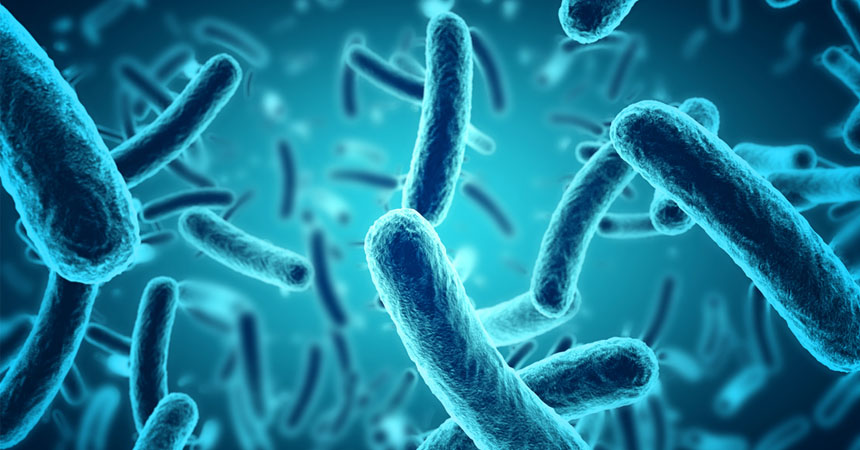Bacteria
Summary
2. Types of bacteria
3. Parts of Bacteria
4. Where do bacteria live?
5. How do bacteria reproduce?
6. Main Characteristics
7. Fun Facts
8. Thanks
1. What are Bacteria?
Bacteria
are single celled microbes.

The cell structure is simpler than that
of other organisms as there is a nucleus or
embrane bound organelles. Instead their
control
centre containing the genetic information is
contained in a single loop of DNA.
Some
bacteria have an extra circle of genetic
material called a plasmid.
The plasmid
often contains genes that give the
bacterium some advantage over other
bacteria.For
example it may contain a gene that makes the
bacterium resistant
to a certain antibiotic.
2. Types of Bacteria
Bacteria are classified into 5
groups according
to their basic shapes:
to their basic shapes:
-> Rod (bacilli)
-> Spiral (spirilla)
-> Comma (vibrios)
-> Corkscrew (spirochaetes)
They can exist as single cells, in pairs, chains or
clusters.

3. Parts of Bacteria
/bacteria_cell_drawing-5786db0a5f9b5831b54f017c.jpg)
Capsule - Found in some bacterial cells, this
additional outer
covering protects the cell when it is engulfed by
other organisms,assists in retaining moisture,
and helps the cell adhere to surfaces and
nutrients.
Cell Wall - The cell wall is an outer covering
that protects the bacterial cell and gives it
shape.
Cytoplasm - Cytoplasm is a gel-like substance
composed mainly of water that also contains
enzymes, salts, cell components, and various
organic molecules.
Cell Membrane or Plasma Membrane Plasma
mebrane surrounds the cell's cytoplasm and
regulates the flow of substances in and out of
the cell.
Pilus - Hair-like structures on the surface of the
cell that attach to other bacterial cells. Shorter
pili called fimbriae help bacteria attach to surfaces.
Flagella - Flagella are long, whip-like protrusion
that aids in cellular locomotion.
Ribosomes - Ribosomes are cell structures
responsible for protein production.
Plasmids - Are gene carrying, circular DNA
structures that are not involved in reproduction.
Nucleiod (DNA) - Area of the cytoplasm that
contains the single bacterial DNA molecule.
4. Where do bacteria live?
Bacteria are found in every habitat on Earth:
Soil, rock, oceans and even arctic snow. Some
live in or on other organisms including plants and
animals including humans.
There are approximately 10 times as many
bacterial cells as human cells in the human body.
A lot of these bacterial cells are found lining the
digestive system.
Some bacteria live in the soil or on dead plant
matter where they play an important role in the
cycling of nutrients.
Some types cause food spoilage and crop
animals including humans.
There are approximately 10 times as many
bacterial cells as human cells in the human body.
A lot of these bacterial cells are found lining the
digestive system.
Some bacteria live in the soil or on dead plant
matter where they play an important role in the
cycling of nutrients.
Some types cause food spoilage and crop
damage but others are incredibly useful in the
production of fermented foods such as yoghurt
and soy sauce.
Relatively few bacteria are parasites or
Relatively few bacteria are parasites or
pathogens that cause disease in animals and
plants.
5. How do bacteria reproduce?
Bacteria reproduce by binary fission. In this
process the bacterium, which is a single cell,
divides into two identical daughter cells.
Binary fission begins when the DNA of the
bacterium divides into two (replicates).
The bacterial cell then elongates and splits into
two daughter cells each with identical DNA to the
parent cell. Each daughter cell is a clone of the
parent cell.
When conditions are favourable such as the right
temperature and nutrients are available, some
bacteria like Escherichia coli can divide every 20
minutes.This means that in just 7 hours one
bacterium can generate 2,097,152 bacteria.
After one more hour the number of bacteria will
have risen to a colossal16,777,216. That’s why
we can quickly become ill when pathogenic
microbes invade our bodies.
6. Main Caractheristics:
1. Simplest organisms: very small size
2. Lack membrane-bound organelles inside the
cell.
3. Have few internal structures that are
distinging under a Microscopy.
4. Genetic imformation is in a circular loop called
a plasmied (instead of having chromosomal DNA)
5. Strong cell walls: resistant to enviromental
changes.

Video:
7. Fun facts:
2- The chlorine in swimming pools isn't
what causes red eyes. It is the chlorine binding
to the bacteria in the water.
6. Main Caractheristics:
1. Simplest organisms: very small size
2. Lack membrane-bound organelles inside the
cell.
3. Have few internal structures that are
distinging under a Microscopy.
4. Genetic imformation is in a circular loop called
a plasmied (instead of having chromosomal DNA)
5. Strong cell walls: resistant to enviromental
changes.

Video:
7. Fun facts:
2- The chlorine in swimming pools isn't
what causes red eyes. It is the chlorine binding
to the bacteria in the water.
3- The average office desk has 400 times
more bacteria than a toilet.
5- The "smell of rain" is caused by a bacteria
called actinomycetes.
6- Mobile phones have 18 times more
bacteria than toilet handles.
7- Chocolate has an anti-bacterial effect on the
mouth and protects against tooth decay.
8- One euro has 3,000 types of bacteria
9- Most antibiotics are made from bacteria
10- Computer Keyboards can carry more than
200 times as many bacteria as a toilet seat
8. Thanks
Internet & google
Biomedical researchs Institute
Chonbuk National University Medicalschooll
Microbiology online
Wilkipedia
Youtube
By Martina Pereda, 2019











Is very good!😃
ResponderEliminar